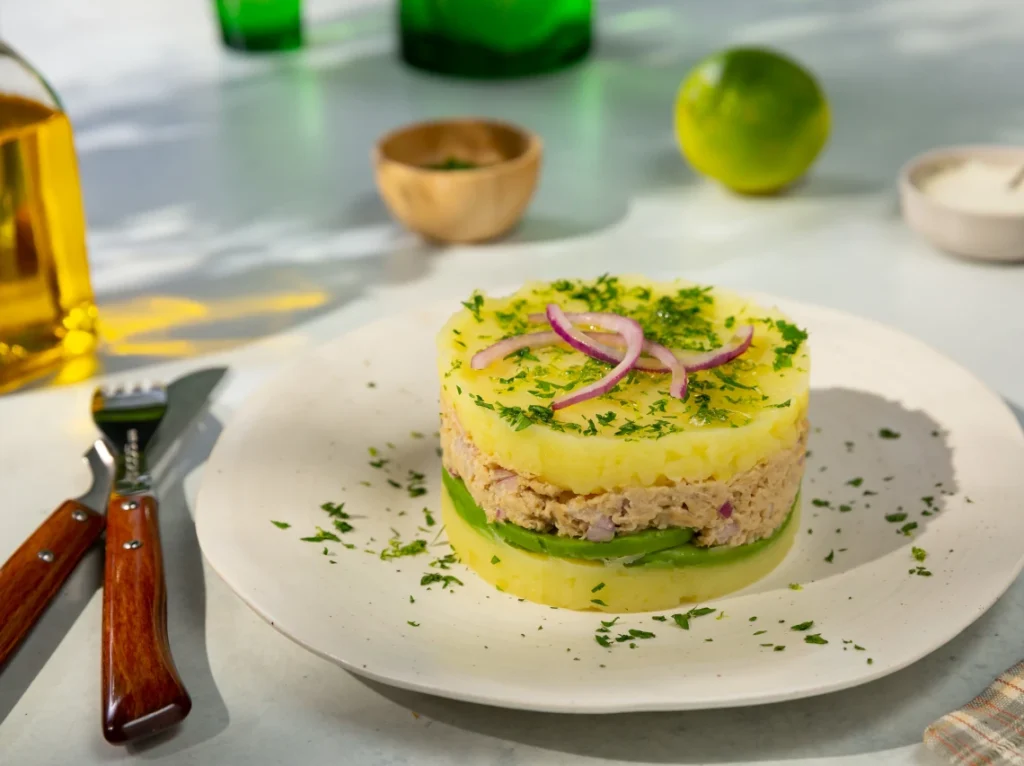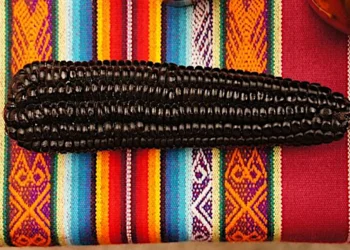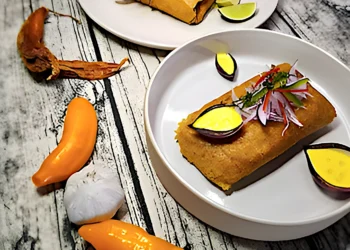This post is also available in:
Español
Nederlands
Have you ever tasted a dish that, with every bite, takes you on a journey through time, weaving together history, identity, and ancestral traditions? The limeño causa, one of the most iconic and representative dishes of Peruvian cuisine, is more than just a recipe; it is a living story that connects generations, cultures, and eras. With each mouthful, the rich history of Peru is revived, a country whose roots go beyond the kitchen and intertwine with the struggle, resilience, and passion of its people.
This vibrant dish, full of color and bold flavors, has not only conquered palates worldwide, but it has also witnessed the historical and cultural changes that shaped Peru. The limeño causa is a true reflection of the fusion of pre-Hispanic, colonial, and republican influences, making it an undeniable symbol of Peruvian identity.
The Pre-Hispanic Version: A Dish with Andean Roots
According to Peruvian gastronomic historian Rodolfo Tafur, the word “causa” comes from the Quechua term kausay, meaning “life” or “giver of life.” This name, full of symbolism, refers to the importance of the potato, the primary crop of the Andes, considered a vital food source. In its origins, causa was simply boiled potatoes accompanied by slices of chili pepper, a combination representing the harmony between two essential Andean crops: potatoes and chili peppers. This simple dish carried deep meaning in the Andean communities.
The Colonial Version: A Fusion of Two Worlds
With the arrival of Spanish conquistadors, Peruvian cuisine underwent a transformation that reflected the encounter of two worlds: European and indigenous. During the colonial era, the Spanish adapted the pre-Hispanic kausay, adding new ingredients such as fish, olives, and avocado, giving rise to the modern version of the limeño causa. The mixture of potatoes with these ingredients, along with a touch of chili, turned the causa into a more elaborate dish while still retaining its original essence. In this way, the causa became a symbol of the cultural fusion that defines Peru.
The Republican Versions: A Dish of Independence and Courage
During the republican period, the limeño causa took on new meanings, each associated with significant historical moments. One of the most well-known stories tells that during Independence Day celebrations, a Lima lady, upon receiving a battalion of soldiers, decided to improvise with what she had on hand: potatoes, eggs, olives, and chili. Thus, she created a dish that not only nourished the soldiers but also symbolized Peru’s resistance and spirit of independence.
Another story, from the time of the War of the Pacific, tells how the women who accompanied the Peruvian army, in the face of a shortage of supplies, gathered what little they had to feed the soldiers: potatoes, chili, lemon, and salt. As they served this mixture, they said “For the cause,” an act that not only nourished the soldiers but also represented the sacrifice and unity of the Peruvian people during wartime. This phrase, “For the cause,” was etched into the collective memory as the definitive name of this iconic dish.

A Dish That Transcends Time
Today, the causa limeña continues to be an essential dish in Peruvian cuisine and a symbol of national gastronomy. Over the centuries, it has evolved, adapting to new versions and flavor combinations, but always maintaining its essence: a tribute to the land, culture, and history of Peru. This dish, humble in its origins but grand in its meaning, remains a symbol of Peruvian identity, not only in Peru but around the world.
“The causa limeña is not just a dish, it is a story of history, of struggle, of love for the land and its traditions.”
Today, the causa limeña is a cultural heritage that invites us to share with the world the richness of Peruvian cuisine. More than just a dish, it is a legacy that, like the potato, continues to give life to new generations.
If the story of the limeño causa captivated you, subscribe to our newsletter to continue exploring more about Peruvian culture and cuisine. Share this article with your friends and leave your comments below! We’d love to hear your thoughts. The limeño causa is just the beginning of an endless culinary journey!








